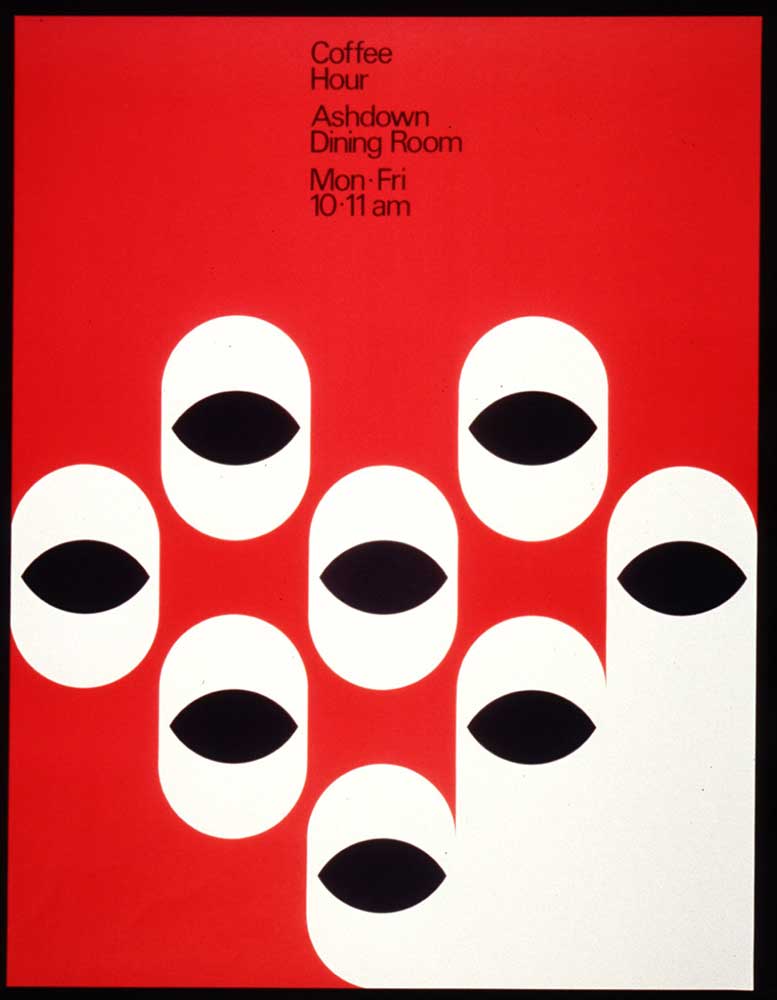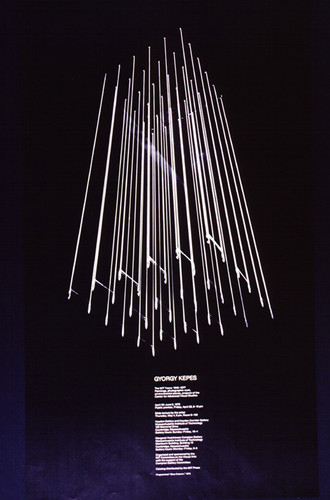





“We hope to make the tools and to use them.” “I don't think there are answers. I think there are thoughts.” “Information is only useful when it can be understood” “… make more intelligible the highly complex language of science… and articulate in symbolic, graphic form the order and beauty inherent in the scientist’s abstract vision.” “Experiment and play as a part of professional discipline is difficult at best. This is not only true of an offset press but of all activities where machines are between the concept and the product.”
https://www.aiga.org/medalist-murielcooper
But rather than a change of course, Cooper's shift toward computers can be seen as the continuing pursuit, via new technology, of an abiding interest: the relationship of dynamic to static media. She was, as she recalled, "always trying to push some more spatial and dynamic issues into a recalcitrant medium," namely print.
"Electronic is malleable. Print is rigid," she told me, then backtracked in characteristic fashion. "I guess I'm never sure that print is truly linear: it's more a simultaneous medium. Designers know a lot about how to control perception, how to present information in some way that helps you find what you need, or what it is they think you nee. Information is only useful when it can be understood."
"Too often, the role of the designer is to clothe a set of messages they've had no participation in. Here is a book. You didn't write it. You don't change it except insofar as you present the information somebody else has generated. You're not really collaborating, either, because the stuff is here, and accomplished fact. I decided I had to wash that out of my head and impose my own problems."
"Well, I'm a little superstitious. In the sense that there is an awful lot I'd like to do. The worst thing about age, never mind the small indignities of wrinkles and bone loss and possible glaucoma, is that"—and here she raised her voice to a clarion call, addressed to herself—"you damn well better get going. Because you don't know what's going to happen."

https://walkerart.org/magazine/design-quarterly-andrew-blauvelt
https://walkerart.org/magazine/muriel-cooper-insights-lecture
https://mitpress.mit.edu/blog/university-press-week-throwback-thursday-featuring-muriel-cooper
https://99percentinvisible.org/article/muriel-cooper-designing-bridge-bauhaus-digital-age/
https://walkerart.org/magazine/muriel-cooper-turning-time-into-space
https://eyeondesign.aiga.org/muriel-coopers-visions-of-a-future/
https://www.aiga.org/medalist-murielcooper
https://mitpress.mit.edu/blog/muriel-cooper

https://www.wired.com/1994/10/cooper-2/
https://youtu.be/L3Z-cj8k71M?t=1925
Computers and Design , Design Quarterly, No. 142, Computers and Design (1989), pp. 1+4-31. This is pretty long but really interesting and has lots of examples of her work and other artists she references, as well as more info about her group at the Media Lab.
https://mitpress.mit.edu/books/muriel-cooper





https://en.wikipedia.org/wiki/John_Maeda
https://maedastudio.com/morisawa-10-2016/
http://thegreatdiscontent.com/interview/john-maeda

https://maeda.pm/2017/12/01/design-by-numbers-in-2017/




![]()



https://medium.com/paper-posts/aaron-marcus-and-letraset-fb76106b7405
https://tianxiethesis.wordpress.com/2013/03/06/reference-talmud-project/
http://smalldesignfirm.com/team/
https://www.pinterest.com/bmincey129/muriel-cooper/
https://www.pinterest.com/bmincey129/muriel-cooper/
https://messageandsmeans.tumblr.com/
Other Works inspired by Muriel Cooper

http://lucheung.com/a-designer-muriel-cooper http://portfolios.sva.edu/gallery/56533013/Muriel-Cooper-in-Context
https://914abcd.com/muriel-cooper
https://issuu.com/arachne/docs/meggs_historyofgraphicdesign2/21
PostScript Language Cookbook https://www-cdf.fnal.gov/offline/PostScript/BLUEBOOK.PDF